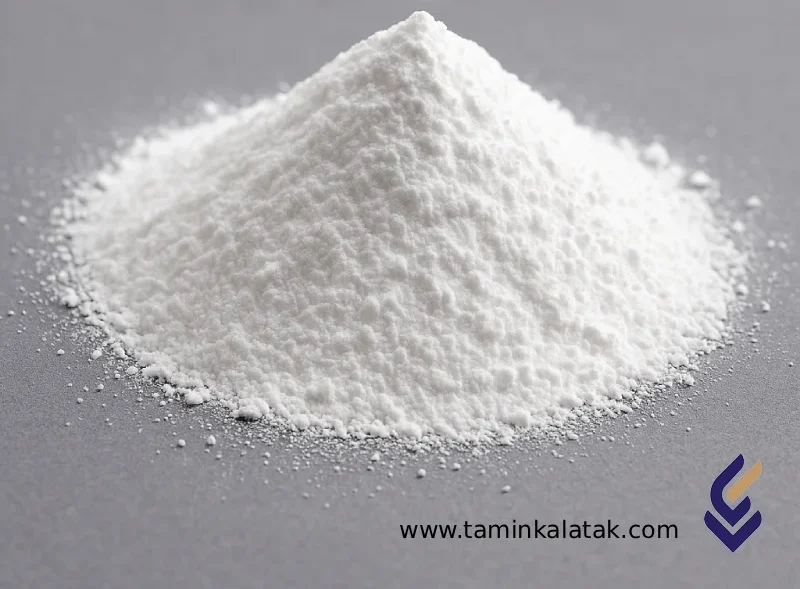Light calcium carbonate
Light Calcium Carbonate (LCC) is an important inorganic mineral compound widely used across numerous industries due to its unique physical and chemical properties.
It is produced as a fine, white, lightweight powder and serves as an essential raw material in plastics, coatings, paper, rubber, and food industries.
Chemical Structure
Light Calcium Carbonate consists of calcium ions (Ca²⁺) and carbonate ions (CO₃²⁻).
In nature, it occurs in mineral forms such as calcite, aragonite, and marble.
Its crystalline structure provides excellent mechanical stability, chemical balance, and compatibility in a wide range of industrial formulations.
| Property | Description |
|---|---|
| Chemical Formula | CaCO₃ |
| Molecular Weight | 100.09 g/mol |
| Crystal Forms | Calcite, Aragonite |
| Bond Type | Ionic |
| Chemical Classification | Inorganic Carbonate |
Physical and Chemical Properties
| Property | Typical Value / Description |
|---|---|
| Appearance | Very fine, white, odorless powder |
| Bulk Density | Approx. 0.5–0.8 g/cm³ (light grade) |
| True Density | ~2.71 g/cm³ |
| Melting / Decomposition Point | ~825°C (decomposes to CaO + CO₂) |
| Solubility in Water | Practically insoluble |
| Solubility in Acids | Reacts with dilute acids, releasing CO₂ |
| Chemical Stability | Stable under normal conditions |
| pH (suspension in water) | Slightly alkaline |
| Toxicity | Non-toxic and environmentally safe |
Main Applications
1. Plastics and Polymers:
Used as a filler and reinforcing agent to improve rigidity, dimensional stability, and reduce production cost.
2. Paints and Coatings:
Acts as an opacifier and extender, enhancing whiteness, smoothness, and coverage.
3. Paper Industry:
Provides brightness, opacity, and smooth surface finish, improving print quality and reducing ink absorption.
4. Pharmaceuticals and Food Industry:
Used as a calcium supplement, pH regulator, and permitted additive in food and medicinal formulations (E170).
5. Rubber and Adhesives:
Improves tensile strength, elasticity, and workability in rubber compounds and sealants.
Advantages
-
Economical and widely available raw material.
-
Non-toxic and safe for both industrial and food-grade applications.
-
Improves mechanical properties and product durability.
-
Lightweight with uniform particle distribution.
-
Environmentally friendly and recyclable.
Limitations
-
Low water solubility limits its use in aqueous systems.
-
Dust generation during handling may cause mild respiratory irritation.
-
Reacts with acids, releasing CO₂ gas; should not be stored near acidic materials.
Safety and Handling
-
Store in a cool, dry, and well-ventilated area.
-
Avoid exposure to moisture to prevent lump formation.
-
Keep sealed containers away from acids and corrosive substances.
-
Use protective mask and gloves to minimize dust inhalation during handling.
Summary
Light Calcium Carbonate (CaCO₃) is a versatile, cost-effective, and safe mineral additive with broad applications in plastics, coatings, paper, rubber, and food.
Its fine particle size, high whiteness, and chemical stability make it one of the most commonly used fillers and performance enhancers in modern industrial formulations.
Applications
| Applications | , , , , |
|---|
Light calcium carbonate
| Products | Chemical formula | CAS number | Grade | Physical appearance | Density (at 20°C) | Melting point | Solubility in water |
|---|---|---|---|---|---|---|---|
| Light calcium carbonate | CaCO₃ | 471-34-1 | Industrial, pharmaceutical, food | White powder, odorless | About 2.71 g/cm³ (light bulk density ~0.5–0.8 g/cm³) | About 1339°C (decomposition to CaO and CO₂) | Very slightly soluble (about 0.013 g/L at 25°C) |







